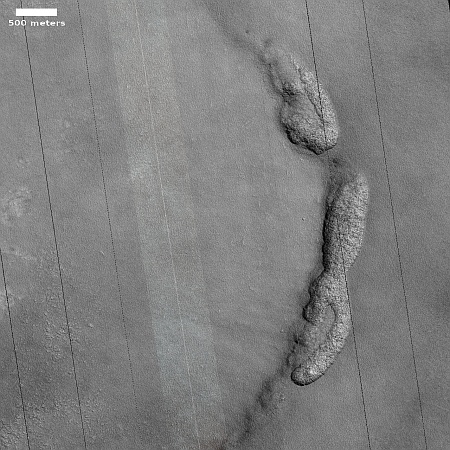Starlab space station wins $15 million grant from Texas

the proposed Starlab space station
Among the grants awarded last week by the new Texas Space Commission, the consortium building the Starlab space station received a $15 million grant to build a facility in Texas.
The Systems Integration Lab will include two labs, the main SIL and a Software Verification Facility. The SIL will house flight-like hardware for testing. In this environment, engineers and astronauts can check systems designed for the Starlab space station, catching any potential issues in advance and ensuring efficient and effective operations in space. The SVF will contain a simulated station environment with flight computers and serve as the primary software integration and requirements verification facility.
Starlab is one of four space stations presently being developed. Starlab had already received a $217.5 million design contract from NASA, as part of the agency’s phase one program to eventually develop two private commercial space stations to replace ISS. NASA also awarded similar development contracts, to Axiom for its Axiom station that will initially be docked to ISS, and to the Orbital Reef station proposal, led by a consortium of companies that includes Blue Origin and Sierra Space.
A fourth company, Vast, did not compete for that phase 1 contract. Instead, it has privately funded its first single modular station, Haven-1, which it is now aiming for a spring 2026 launch. All four station projects are competing to win NASA’s much larger phase 2 contract awards, which will only go to two of these four proposals. At present, this is how I rank their chances:
- Haven-1, being built by Vast, with no NASA funds. The company is moving fast, with Haven-1 to launch and be occupied in 2026 for a 30 day mission. It hopes this actual hardware and manned mission will put it in the lead to win NASA’s phase 2 contract, from which it will build its much larger mult-module Haven-2 station..
- Axiom, being built by Axiom, has also launched three tourist flights to ISS. There are rumors it is experiencing cash flow issues, but it is also going to do a fourth ISS tourist flight this spring, carrying passengers from India, Hungary, and Poland.
- Orbital Reef, being built by a consortium led by Blue Origin and Sierra Space. Though Blue Origin has apparently done little, Sierra Space has successfully tested its inflatable modules, including a full scale version, and appears ready to start building the station’s modules for launch.
- Starlab, being built by a consortium led by Voyager Space, Airbus, and Northrop Grumman.
Of all these projects, Starlab appears to have cut the least amount of hardware, which is why I rank it last. At the same time, this grant from Texas is some positive news. In addition, it has partnered aggressively with the European Space Agency (ESA), and appears to have its support for making the station Europe’s ISS replacement. If so, even if it doesn’t win NASA’s phase 2 award it might instead get ESA to fund it. That Europe’s biggest aerospace company Airbus is now one of its major partners clearly helps.

the proposed Starlab space station
Among the grants awarded last week by the new Texas Space Commission, the consortium building the Starlab space station received a $15 million grant to build a facility in Texas.
The Systems Integration Lab will include two labs, the main SIL and a Software Verification Facility. The SIL will house flight-like hardware for testing. In this environment, engineers and astronauts can check systems designed for the Starlab space station, catching any potential issues in advance and ensuring efficient and effective operations in space. The SVF will contain a simulated station environment with flight computers and serve as the primary software integration and requirements verification facility.
Starlab is one of four space stations presently being developed. Starlab had already received a $217.5 million design contract from NASA, as part of the agency’s phase one program to eventually develop two private commercial space stations to replace ISS. NASA also awarded similar development contracts, to Axiom for its Axiom station that will initially be docked to ISS, and to the Orbital Reef station proposal, led by a consortium of companies that includes Blue Origin and Sierra Space.
A fourth company, Vast, did not compete for that phase 1 contract. Instead, it has privately funded its first single modular station, Haven-1, which it is now aiming for a spring 2026 launch. All four station projects are competing to win NASA’s much larger phase 2 contract awards, which will only go to two of these four proposals. At present, this is how I rank their chances:
- Haven-1, being built by Vast, with no NASA funds. The company is moving fast, with Haven-1 to launch and be occupied in 2026 for a 30 day mission. It hopes this actual hardware and manned mission will put it in the lead to win NASA’s phase 2 contract, from which it will build its much larger mult-module Haven-2 station..
- Axiom, being built by Axiom, has also launched three tourist flights to ISS. There are rumors it is experiencing cash flow issues, but it is also going to do a fourth ISS tourist flight this spring, carrying passengers from India, Hungary, and Poland.
- Orbital Reef, being built by a consortium led by Blue Origin and Sierra Space. Though Blue Origin has apparently done little, Sierra Space has successfully tested its inflatable modules, including a full scale version, and appears ready to start building the station’s modules for launch.
- Starlab, being built by a consortium led by Voyager Space, Airbus, and Northrop Grumman.
Of all these projects, Starlab appears to have cut the least amount of hardware, which is why I rank it last. At the same time, this grant from Texas is some positive news. In addition, it has partnered aggressively with the European Space Agency (ESA), and appears to have its support for making the station Europe’s ISS replacement. If so, even if it doesn’t win NASA’s phase 2 award it might instead get ESA to fund it. That Europe’s biggest aerospace company Airbus is now one of its major partners clearly helps.









